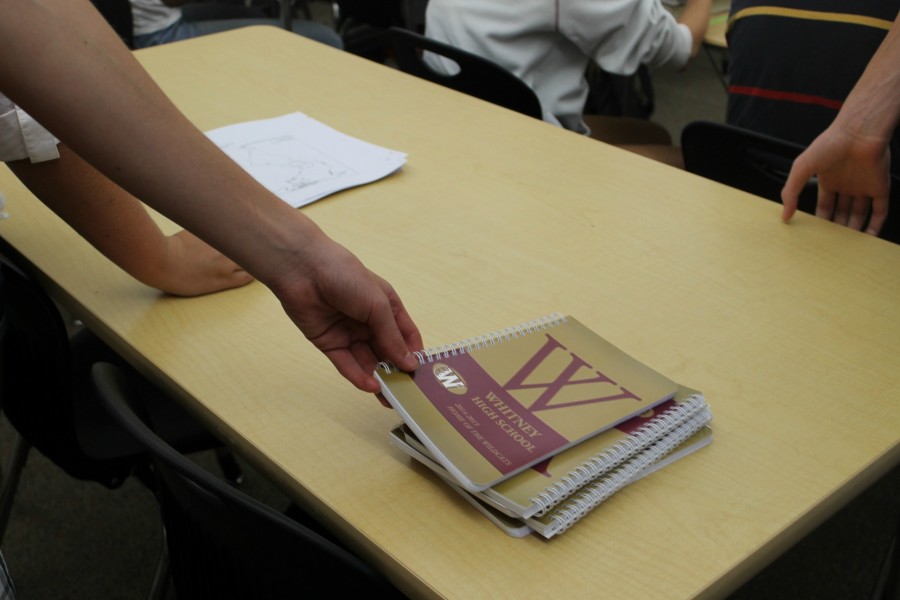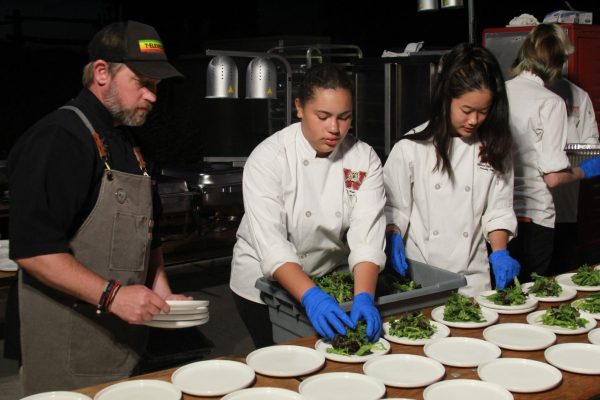The delay in planners reveals an alternative resource
When planners arrived later than anticipated, it was expected that many students would panic; not having a resource to write down their homework and general reminders. However, this mistake may have lead to the dependence of an alternative technology-based resource to replace the duties of planners. The beginning of this new school year has revealed which students are the planner-holics, and which students can use technology such as Schoology to their advantage.
Makenna Schroeder found it difficult to keep on top of homework and was extremely grateful when the planners came in.
“It was hard to remember what to do for homework without planners… Handwriting is a lot easier. It takes way too much time to go on Schoology,” Schroeder said.
A week and a half into the new school year, the planners arrived and the stamps began. Many students, before the planners had arrived, had to use binder paper or a notecard to write all their homework down.
“I had a separate piece of binder paper and I wrote [my homework] all down into sections of my classes,” Schroeder said.
Although binder paper is one way to replace the planners, some students have used a different resource. Teachers have been encouraging students to use Schoology more often and have been encouraged to post assignments and discussion topics there.
“[Schoology] is gonna be a big big push for pretty much every teacher on campus. A lot more is going to go towards a digital measure. I have tried to go digital as much as I can,” Mr. Bret Hunter said.
Teachers are using Schoology so students can access homework, worksheets, or online PowerPoint slideshows at home through a computer, phone, or any mobile device. However, some students and teachers are still working out the kinks on these websites. And as difficulties arise students need the school planners for a more reliable and easily accessible way to access their homework for the night.
“There are some students for whom their planner is their world and that’s what they live by, hand-writing it out. And we found out real quick at the beginning of the year who those kids were,” Hunter said.
Even though there are some rough points when it comes to this technology transition, students and teachers are learning their way around schoology.
“I think as we go through this transition point, you’ll probably find that some teachers are already on board and are already there, some have been really comfortable with the handwritten part for a long time, and that’s what worked for them…” Hunter said.
An example of a teacher who got accustomed to the school’s technology extremely fast is Mr. Scott Collins, a new teacher in the history department.
“You don’t have to be a programer to write your own website anymore. It’s gotten a lot easier over time…[Schoology] is what we’re doing, and so that’s something you can’t change. And things you can’t change, you’ve got to embrace.” Collins said.
Collins said he has gotten used to the Schoology website extremely fast and has almost every document handed out in class ready to be printed through his class’s website. He also takes advantage of Schoology by holding online discussions for his students that he can check anywhere he goes.
Besides the fact that the planners are needed for stamps for extended lunch or intervention appointments, some students have successfully adapted and gotten all their homework in on time without them. Still those the planner-holics are out there, and now they have finally their planners back in their hands.
by RACHEL MARQUARDT







![On the stage, Daniel Bozinovski and Rachel Treto play their part as Tom and Hannah in the show “The Cast List”. The show was about a group of students who were told about their cast list for the play “Romeo and Juliet.” The Theater I students were in preparation for their first showcase of the year. Students went over their lines during all of their class for the past two months. “[We put in] a lot of rehearsal, practicing lines, making sure you have everything memorized and making sure you are ready to go in and not forget anything,” Nathan Weeks said. Photo by Megan Kubas.](https://www.whitneyupdate.com/wp-content/uploads/2024/05/IMG_4085-600x396.jpg)
